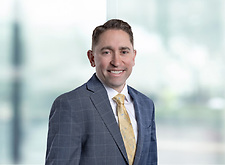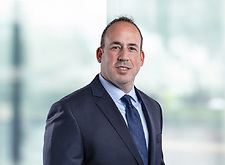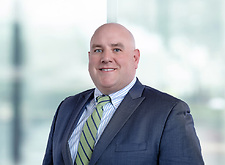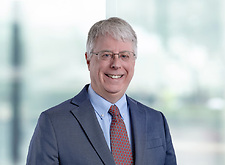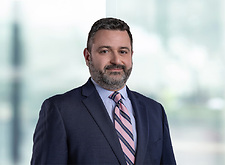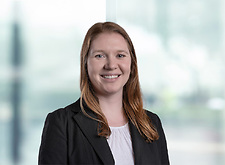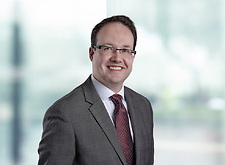Renewable Energy Projects and Brownfield Redevelopment in New York State – The Risk can be Worth the Increasing Reward
Brownfields, landfills, and other underutilized sites are attracting renewable energy developers now more than ever. In recent months, New York State has sent strong market signals that will drive development to these sites, so they can be put back into beneficial reuse. The State’s leveraging of incentive dollars is meant to assist in offsetting the historical risk aversion to such redevelopment and ensure smart siting that benefits host communities in a myriad of ways. The State has coupled the increased incentives that will be available to project developers with community-based incentives, such as offsets of ratepayer bills, aimed at further encouraging local governments to seek out these types of redevelopments on certain controlled sites, as well as finding other ways to make these types of sites advantageous to developers.
The recently expanded NY-Sun Program is a prime example of this State-based incentive planning. On May 14, 2020, the New York State Public Service Commission (PSC) approved an extension of the NY-Sun Program through 2025, with additional funding for incentives that are designed to further the State’s Climate Leadership and Community Protection Act (CLCPA) target of deploying six gigawatts (GW) of solar by 2025.[1] The approval includes $19 million in added incentives for projects sited on brownfields and landfills to encourage prudent land use and productive redevelopment of otherwise unattractive sites. The approval also includes $111 million for a Community Adder Incentive. The New York State Energy Research and Development Agency’s (NYSERDA) June 1 NY-Sun Operating Plan expands upon that approval, providing that brownfield projects can receive an additional $0.15 per watt DC for eligible capacity on top of the base megawatt (MW) block incentive, which steps down over time and by sector, depending on the size and location of the proposed project. The previous NY-Sun adder for landfill solar projects was only $0.10 per watt DC. Thus, the new adder represent a 50% increase in the incentive. Furthermore, under current NY-Sun program rules community distributed generation (CDG) sited on landfills would be able to stack these adders for an even greater total incentive.
In addition to energy-based incentives, developers can also tap into other State incentive programs for the redevelopment of contaminated sites, such as the New York State Brownfield Cleanup Program (BCP). The BCP is a prime vehicle for these types of projects, as it provides a multi-tiered benefit, including the ability to capture refundable State tax credits, as well as the ability to obtain a liability waiver, known as a Certificate of Completion, from the New York State Department of Environmental Conservation (NYSDEC), mitigating certain long-term environmental risk at the site post-closure. This provides not just upfront pecuniary benefit, but also helps with the ability to address environmental risk considerations of potential project acquirers up front.
But as developers, municipalities, site owners and other market participants consider the path forward for building a project on a contaminated or other brownfield site, appropriate steps should be taken to minimize risk and maximize reward. Here are a few things to consider before engaging on these types of sites.
I. Environmental Liability Concerns Regarding Site Status
Most major environmental statutes can attach potential liability for environmental contamination and/or impact at or originating from landfills and brownfield sites to either the owner or operator. This means that leasehold interests carry risk, which can be heightened depending on the proposed scope of the site redevelopment process. This risk can be buttressed by the fact that many of these sites are subject to existing engineering or institutional controls that place obligations and/or restrictions on site usage and potential operations that can run with the land, with potential recourse for non-compliance. While the parties to a transaction can shift risk contractually, that does not necessarily provide protection from the regulatory agencies that oversee and enforce clean-up and potential ongoing operations and maintenance obligations that may exist at these sites.
Developers who seek to purchase rights to, or interests in, these sites should conduct appropriate and site-specific diligence activities to assess and understand the inherent risk that can be involved. A key piece of the diligence equation is to work with qualified and knowledgeable counsel, engineers, and/or consultants that can help with the necessary risk assessment, and to the extent possible, develop strategies to build in protections against known and potential risks at these sites.
Through the due diligence process, developers will want to prioritize understanding the known history of the site and attendant environmental conditions that can and/or will impact project development decisions. For example, undergrounding of transmission lines may not be prudent and/or possible on certain capped landfills and brownfield sites. In addition, redevelopment activities may need to take into account specific gradations of the site because of the potential for storm water runoff being a concern, meaning that project infrastructure may need to be relocated to certain areas of the site. No matter the site-specific details, it is important for developers to work through their understanding of site risk by conducting appropriate assessments within the scope of their own risk tolerance.
Any diligence process regarding these types of sites should include at least the following:
- Conducting a Phase 1 Environmental Site Assessment (Phase 1) for purposes of: (a) potentially qualifying for certain Federal and State affirmative defenses under the Comprehensive Environmental Response, Compensation, and Liability Act (CERCLA, and also known as Superfund), and any relevant State analog pursuant to the “All Appropriate Inquiry” process; and, (b) understanding, from a practical perspective, known or potential environmental impairment considerations within the confines of your proposed redevelopment area. Note that part of the Phase 1 process involves a consideration of not just on-site risks, but the potential for off-site impacts on the property, which can be an important consideration.
- Reviewing existing materials regarding the environmental condition of the property, any relevant plans, regulatory reports, material correspondence with Federal or State environmental authorities, and other related materials.
- Consideration of structuring the transaction to manage and address risks identified in the diligence process. This may involve contractual shifting of risk, carving out certain project areas and requirements, seeking indemnification promises or regulatory agreement for limitation of liability, potential use of sophisticated environmental risk transfer instruments, such as insurance products, and other related actions. Traditionally, these issues all need to be explored and principally addressed during the diligence and contracting period.
Many otherwise tepid developers have gotten comfortable with sites that may have historically scared them off by working through this process with experienced counsel and environmental consultants. Moreover, owners of these types of sites have, over the last several years, viewed these developments as an opportunity to turn an otherwise mothballed asset into a viable revenue generating stream. This allows owners to agree to greater upfront concessions than they may have seen as agreeable in the past.
Once you have begun to answer these questions, you should consider the ways in which funding from State incentive programs can enhance the value of your solar project and ameliorate some of your risk concerns. It is also an opportunity to more fruitfully engage with local municipalities about attendant development costs and risks, which may result in the ability to assess mutually beneficial actions that can be taken to assist in driving the process forward.
II. State Incentives
As part of its NY-Sun Expansion Petition, NYSERDA proposed to extend the existing incentives available for solar sited on landfills and brownfields as part of a “strategy for balancing land use pressures” and to respond to other State policy priorities. On June 1, NYSERDA filed an updated NY-Sun Operating Plan that describes how the PSC’s new funding authorizations will be allocated. According to the Operating Plan, a total of $19 million is budgeted for solar projects sited on landfills or brownfields. These projects can receive an additional $0.15 per watt DC for eligible capacity on top of the base MW block incentive, which steps down over time and by sector, depending on the size and location of the proposed project.[2] Thus, in order to take advantage of the added incentives, developers will need to have an approved NY-Sun project. Under the current NY-Sun Program rules, developers seeking the brownfield/landfill adder must include a registry number on their NY-Sun project application to show that the system is located on a site defined under NYDEC’s Solid Waste Management or Environmental Remediation Program regulations.[3] Additional eligibility criteria may be required under the expanded NY-Sun Program, such as site-specific conditions or required documentation to justify entitlement to the adder, which are anticipated to be included in updated NY-Sun Program Manuals.
Under the existing NY-Sun Program rules, “no array or solar panel can have more than one incentive adder, with the exception of those projects receiving the … Community Adder Incentive.”[4] Thus, unless the rules for stacking adders change in the updated NY-Sun Program Manuals, CDG sited on landfills could receive both the landfill adder and the Community Adder. The Community Adder is available to CDG projects in two tranches in utility territories where the Community Credit and Market Transition allocations under the Value of Distributed Energy Resource (VDER) value stack have been fully committed. The first tranche provides an incentive rate of $0.22 per watt DC for the first 250 MW DC of capacity. The second tranche provides an incentive of $0.18 per watt DC for the next 200 MW DC of capacity. Orange and Rockland and Central Hudson have their own Community Adder tranches. A $0.25 per watt DC incentive is available for 65 MW DC capacity in Orange and Rockland if the project qualified before April 18, 2019. Projects after that time will receive a lesser incentive of $0.15 per watt DC. In Central Hudson service territory, the Community Adder is offered at $0.40 per watt DC for 102 MW DC of capacity if the project qualified before April 18, 2019. All other eligible projects up to the capacity limit will receive an incentive of $0.30 per watt DC.[5] NYSERDA will maintain a Community Adder tranche dashboard on it website to reflect allocated capacity and monitor the incentive as it steps down.
As previously noted, refundable tax credits are available for developers who commit to remediating previously contaminated sites for beneficial reuse. The BCP program is a great tool for addressing financial incentives, while addressing some potential underlying risk, and obtaining greater certainty, without the obligation to cleanup legacy contamination concerns to an unnecessary standard for the intended use. The process also inherently requires citizen participation and public notice, so its adds a level of transparency to the process that can be beneficial when considering community engagement and acceptance. Developers who have identified a previously contaminated site as a potential location for a solar redevelopment project may consider how the tax incentives available for cleanup activities can be coupled with incentives for the solar project.
The PSC’s authorization of $19 million for added incentives is a clear indication of a State policy favoring beneficial reuse of previously developed and underutilized sites. This is a prime time for developers to take advantage of the incentives available for redevelopment projects.
III. Value for Municipalities and Ratepayers
Landfills and brownfields are also particularly attractive sites when it comes to enhancing community value. Municipalities should be aware of the benefits that solar redevelopment projects can provide. These projects increase the local tax base, and through Payment in Lieu of Tax (PILOT) agreements, can provide a solid revenue source to the taxing jurisdictions. Thus, a municipality can bring revenue generating assets into their communities on land that would otherwise be unproductive.
Community solar can also provide financial benefits to ratepayers – both residential customers and businesses in the community. Ratepayers can purchase credits from community distributed generation (CDG) projects to reduce their electricity bills. In its comments on NYSERDA’s NY-Sun Expansion Petition, the Clean Energy Parties, comprising the Solar Energy Industry Association (SEIA), Alliance for Clean Energy New York (ACE-NY), Natural Resources Defense Council (NRDC), New York Solar Energy Industry Association (NYSEIA), the Pace Energy and Climate Center and Vote Solar, stated that, “solar projects on closed landfills and previously contaminated sites can provide considerable energy savings that ultimately benefit taxpayers, as well as turn abandoned properties into productive use.”[6]
The PSC recently initiated a new proceeding to develop a Renewable Energy Facility Host Communities Benefits Program, as required by the recently enacted Accelerated Renewable Energy Growth and Community Benefit Act (the “Act”).[7] The Act requires the PSC to provide utility bill credits to utility customers in communities where large-scale renewable projects permitted under the State’s new Section 94-C process will be located.[8] The host community credit is aimed at providing added savings to ratepayers in the community, regardless of whether they purchase credits from a community solar project to reduce their electricity bills. In this way, the host community credit can expand the benefits of solar projects to ratepayers beyond a community solar subscription.
IV. What’s Next?
Once the PSC approves the updated NY-Sun Operating Plan, NYSERDA will update the NY-Sun Program Manuals with new or revised program eligibility rules. These rules will detail how developers can take advantage of the landfill and brownfield adder, currently set at 0.15 cents per MW DC, and the Community Adder, including any site-specific eligibility criteria that must be met.
The PSC’s Renewable Host Communities Benefit proceeding is open for public comment on how to design the credit and how benefits should flow from developers to utilities to customers. The notice soliciting comments asks interested stakeholders to reply to specific questions about the program design, though responses need not be limited to answering these questions.[9] Municipalities and developers alike have the opportunity to weigh-in on how the program should be designed to both meet the requirements of the Act and provide meaningful benefit to ratepayers in affected communities. Comments will be accepted until July 3, 2020.
The Act also directed NYSERDA to administer a “Build-Ready Program.”[10] Under the program, NYSERDA is responsible for identifying brownfields, landfills, and other underutilized sites for renewable development. To launch the program, NYSERDA will need to file a petition with the PSC seeking funding and proposing initial program design. Stakeholders will have an opportunity to submit public comments on NYSERDA’s forthcoming petition when the comment period opens.
We are following these programs and will provide more details when they come to light. In the meantime, developers looking to redevelop a brownfield, landfill, or other underutilized site with a solar project should consider the environmental due diligence steps described above in order to take full advantage of the incentives available for these projects.
If you have any questions about utilizing these incentives, or renewable energy or brownfields projects generally, please contact Daniel Spitzer (716.848.1420), Noah Shaw (518.736.2924), or a member of our Renewable Energy Practice.
[1] Case 19-E-0735, Proceeding on Motion of the New York State Energy Research and Development Authority Requesting Additional NY-Sun Program Funding and Extension of Program Through 2025, Order Extending and Expanding Distributed Solar Incentives (issued May 14, 2020), available at http://documents.dps.ny.gov/public/Common/ViewDoc.aspx?DocRefId=%7bA67E946F-40B0-49C4-93CD-7BC454987CDF%7d. For more on the extension and expansion of the NY-Sun Program, see /newsroom-publications-12154.html.
[2] Case 19-E-0735, supra, NYSERDA, NY-Sun 2020-2025 Operating Plan (effective June 1, 2020), available at http://documents.dps.ny.gov/public/Common/ViewDoc.aspx?DocRefId={4F3CB5E3-BA5A-4182-AA44-94C3C24C2441}.
[3] 6 NYCRR Parts 360 and 375.
[4] See NY-Sun Upstate and Long Island Program Manual, available at https://www.nyserda.ny.gov/-/media/NYSun/files/Contractor-Resources/upstate-program-manual.pdf.
[5] See Case 19-E-0735, supra, NYSERDA, NY-Sun 2020-2025 Operating Plan (effective June 1, 2020), available at http://documents.dps.ny.gov/public/Common/ViewDoc.aspx?DocRefId={4F3CB5E3-BA5A-4182-AA44-94C3C24C2441}.
[6] See Case 03-E-0188, supra, and Case 14-M-0094, supra, Comments on the New York State Energy Research and Development Authority Petition Requesting Additional NY Sun Program Funding and Extension of Program Through 2025 by the Clean Energy Parties (filed Feb. 10, 2020), at 11.
[7] See Case 20-E-0249, In the Matter of a Renewable Energy Host Communities Benefits Program.
[8] For more on this new siting process, see /newsroom-publications-11826.html.
[9] See Case 20-E-049, supra, Notice Soliciting Comments (issued May 29, 2020), available at http://documents.dps.ny.gov/public/Common/ViewDoc.aspx?DocRefId=%7b10C5C9C0-5AC5-494C-8B07-53CFA0EAE09A%7d.
[10] For more on the program, see our alert here: /newsroom-publications-11979.html.
Featured
- Partner
- Partner
- Partner
- Partner
- Partner
- Partner
- Partner
- Partner
- Senior Associate
- Partner
- Partner
- Co-Chair of the Firm, Partner
- Partner

